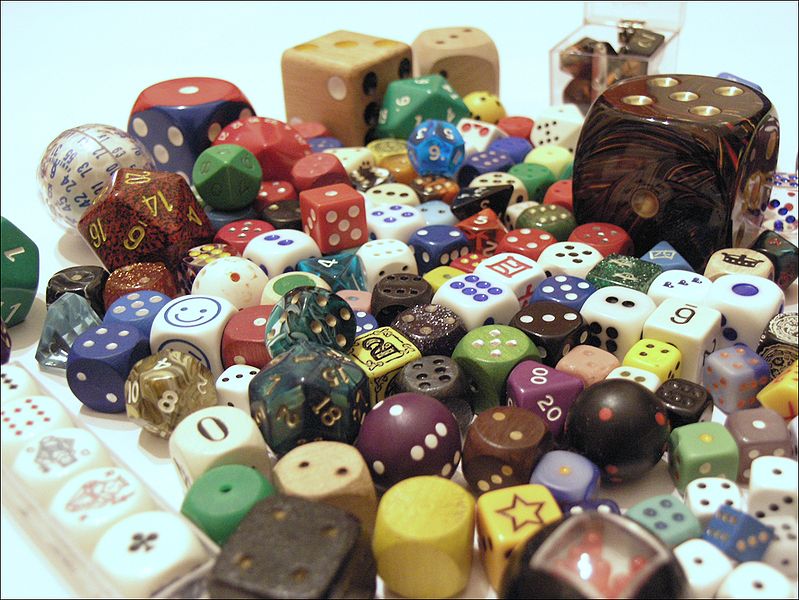More navel-gazing, following an earlier inward journey of pretentious self-discovery (aka Part I).
Back in the days of GURPS 3e, there were quite a few areas of rules that were “broken” – or at least problematic – in a wide range of ways. (4e is much improved in this regard!) Many gamers worked up house rules and patches to address these. I placed a big collection of my re-workings (developed with the aid of many helpful folk, especially a fellow going by the handle Dataweaver) into a big “3e overhaul” I named GULLIVER.
While moving old site and GULLIVER FAQs to a new FAQ page, I extracted some “GULLIVER game design methodology” notes for relocation to a better home. I’m posting them here.
Recycling some really old stuff makes for a poor post, so let’s first add a bit of new content.
Game design elements that makes me happy
A brief list:
Realism and detail that are up-front where desirable – and, where not desirable, that quietly stand by “under the hood” (as opposed to simply being absent).
Modular, optional parts – “switches” is a good name that folks like Dr Kromm use – that let GMs build their own perfect game. A good RPG can be more of an RPG framework than a finished RPG: that is, a set of options and parts that let you build your ideal finished RPG. (Preferably with built-in defaults and suggested collections of parts, for GMs that don’t want to do too much building!)
Universality and genericness. It’s fine to have rules that are mostly intended for narrow conditions (such as human characters, veteran fighters, specific game settings, etc.) – but the best rules are those that happen to work well in those situations, because they were designed to work in most any conditions. (I like the way the GULLIVER goal is stated: “[It] doesn’t want to be a set of special rules for Pixies and Giants. It wants to be a set of normal, everyday game rules for humans – which happen to work for Leprechauns, Jotuns, cats, blobs, and space wyrms too.”)
Old notes on GULLIVER design methodology
Now back to that reposting of really old notes. Re-reading the notes now (I’m adding this paragraph in the 2020s), they’re charmingly (?) pretentious (yeah, I know that), and ramble on about stuff that hardly seems relevant to anything. I guess it’s a “you had to be there” sort of thing: ol’ 3e did have problems of the sort alluded to below, oddities that 4e players, thankfully, may never have to experience.
So, if you’ll kindly read the below with that “it was a thing back then” caveat in mind, I offer my old notes on what was in my mind when offering up a big, goofy home-brew revision of big swaths of 3e. (Notes from when? I don’t even know. Over 20 years ago.) This is for the overly curious (though I don’t know who that may be), or for those benighted souls who really want to read every thought on game rules hacking from every unknown blogger.
(Also please keep context in mind: Any seeming stridency aside, none of this stuff was vital to in-game fun, neither then nor now. It’s just enjoyable to over-think things once in a while, that’s all. : )
Okay. Back in time we go [cue wavy “flashback” screen effects]…
The old notes
A “methodology” only became clear in hindsight, but it’s clearly inspired by GURPS‘ focus on “reality check”-based simulation. You could perhaps label it “deconstruction and reconstruction”. For an odd situation like whacking a tiny target with a stick, or detailing flight performance, I tried to arrive at a better simulation by breaking the situation down into the factors involved, and then trying to put those back together into some sort of game rule.
Deconstruction involves separating and looking over all of the components (i.e., what are the biological effects of size on muscle strength?). Reconstruction asks what you want to do with those (i.e., how do you want muscle strength to relate to damage in the game?).
But even if methodology was little more than the firing of a few shy, subconscious neurons, there were several intertwined design goals for GULLIVER that Your Author kept closer to the front burners:
Realism: Specifically, more realistic simulation of many physical aspects of designing and gaming characters. The underlying premise is that GURPS can offer more realistic simulation in many areas through new or revised rules, often without adding complexity.
Choice: GULLIVER is all about options, not forced changes. For those areas where increased realism does mean added complexity, it usually tries to offer an option that adds less realism but little or no extra complexity. And of course, you always retain original GURPS rules as options.
Universality: Closely tied to “genericness”, or putting the GU back into GURPS. GULLIVER doesn’t want to be a set of special rules for Pixies and Giants. It wants to be a set of normal, everyday game rules for humans – which happen to work for Leprechauns, Jotuns, cats, blobs, and space wyrms too.
Modularity: GULLIVER is a collection of many independent rules or systems, not a use-it-all-or-leave-it whole. Some items work best in combination with others, but overall they’re mix-and-match; use as much or as little as you like. (Where necessary, there’s plenty of exposition on how to use Rule X with or without Rules Y and Z.) Even the individual Books are designed to be as stand-alone as possible.
Extension: GULLIVER prefers putting existing GURPS rules into new uses, over creating all-new rules. Rules for the effects of a high ratio of ST to body mass? The basic solution’s already there: just extend the existing encumbrance rules in the other direction.
Definition: Getting the terms straight does wonders for getting to the bottom of a problem. This includes correcting wrong definitions, like the mistaken “Dodge = Move” in GURPS that causes trouble.
Simplification: GULLIVER adds lots of detail, which by definition decreases simplicity – but it also uncovers areas where cleaner design removes excess baggage. Why use GURPS‘ separate encumbrance rules for humans, Supers, beasts, and fliers, when one properly-done rule does for them all? Why add a separate rule for computing animals’ Dodge, when the normal human rule (once defined properly!) works perfectly for animals too?
Codification: GURPS already offers stats for some large and small creatures – so why not codify guidelines for how those stats can be set with consistency? Why not codify a single master rule for collisions, which works in slams, falls, or car crashes? Codification often leads to simplification, as in core rules for pain and shock that replace a number of disparate, single-case GURPS rules, or a single set of throwing rules for both weapons and non-weapons.
Playability: Yep, even that is in there. After deconstructing a situation into a mess of components, the next step is to see whether a quick’n’easy game rule can be assembled from the parts. An example is the “simple” rule for Contests of ST, which looks foreign to a GURPS player but is easier than the existing patched rule from Compendium.
Compatibility: For all its changes, GULLIVER doesn’t want to create a new game; it goes to great lengths to stay compatible with GURPS. Continuing with the preceding example, its default “detailed” rules for Contests of ST aren’t nearly as elegant as its new “simple” rule, but are more “GURPS-like”.
Completeness: Why do things halfway? Within the limits of Your Author’s time, patience, and knowledge, GULLIVER tries to explore the threads of any topic far enough to touch on all likely complications, exceptions, and special considerations. This is, of course, a major hindrance to:
Brevity: Not. The Good Twin of Completeness, this goal was maimed and buried alive by its Evil Twin sibling.


